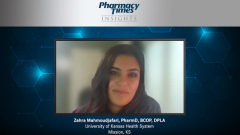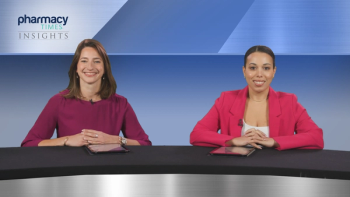
Evolving Treatment Landscape for CLL
Dr Mahmoudjafari highlights the changing treatment landscape for patients with CLL.
Zahra Mahmoudjafari, PharmD, BCOP, DPLA: There has been so much change in the treatment landscape of CLL [chronic lymphocytic leukemia], with some incredible progress. Even though it’s a small disease state without a ton of incidence, it still has remarkable progress in this landscape. Our diagnosis and management are dependent on the patient’s staging and other symptoms. We have 2 primary staging systems, Rai and Binet. The Rai staging system [looks for] characteristics such as lymphocytosis, splenomegaly, hepatomegaly, plus or minus anemia, or thrombocytopenia. The second system, Binet, takes into account stages of cytopenia and is staged A, B, or C. Obviously, the more severe disease—or if the patient has high-risk features, such as deletion 17p, deletion 11p, unmutated IGHV, mutated TP53, or other complex stereotypes—tends to be where we treat more aggressively. That’s where they have a significant impact on the patient’s quality of life.
Traditionally early stage CLL—low-risk Rai 0 or Binet A—isn’t normally treated and we take more of a watch- and-wait approach. Then with intermediate or Rai stage 1 or 2, Binet B, this can be treated if they have signs of disease activity. But with advanced-stage, high-risk Rai 3 or 4 or Binet C, we always treat.
Historically chemotherapy was the most common treatment modality. It was a combination of fludarabine, cyclophosphamide, and rituximab, or FCR. Alternatively, it was bendamustine and rituximab. However, none of the traditional chemotherapy regimens resulted in a cure, and the prognosis for patients with high-risk cytogenetics was really poor. Since 2014, the landscape has evolved after the introduction of BTK [Bruton tyrosine kinase] inhibitors, venetoclax, obinutuzumab, and PI3K inhibitors, so we have lots of choices and factors to consider before we initiate treatment.
The challenge is when we mix and match oral and IV [intravenous] therapies. This can be a significant operational burden on not only the health system and the caregivers but also on the patients themselves. For instance, if we’re using oral agents in combination with IV therapy, this can make it very complicated in terms of not only patient adherence and toxicity management but also delays in insurance authorizations. One is authorized through the medical benefit and the other is through the prescription benefit. We have a lot to consider when we’re designing a treatment plan. What we typically consider is the clinical stage of the disease and the symptoms of the patient. We also think of the fitness and concomitant diseases of the patient, particularly with regard to the potential organ toxicity of our newer targeted agents.
[There’s also] the genetic risk of leukemia. As I alluded to previously, in a patient with advanced or active symptomatic disease, we would start treatment with very little delay. Patients are typically evaluated for other comorbidities, renal function, and a low cumulative illness rating score. This is designed to assess the degree of physical impairment. For the most part, we’re done using chemoimmunotherapy. However, a small subset of patients are young—ie, less than 65—and fit with IGHV-mutated disease and no high-risk genetic abnormalities that could potentially be cured with chemoimmunotherapy. In those patients, we would consider FCR [fludarabine, cyclophosphamide, rituximab] with those characteristics.
Most of our patients who are newly diagnosed would be better served with these new targeted therapies. Patients with impaired physical condition may be offered either venetoclax plus obinutuzumab or ibrutinib monotherapy or acalabrutinib plus or minus obinutuzumab. There’s no evidence to favor 1 of these options over another, and there’s no survival benefit that’s been documented studying them in comparison. The big part is the potential adverse effects of these agents, which are a big consideration. Our goal for these patients is symptom control. Patients with deletion 17p or TP53 mutations are uniquely challenging because there’s no role for chemoimmunotherapy. In those patients, we’ll use the combinations with venetoclax or obinutuzumab plus or ibrutinib to gain some disease control. In these patients, an allogeneic stem cell transplant should be discussed in the first or second relapse.
Transcript edited for clarity.
Newsletter
Stay informed on drug updates, treatment guidelines, and pharmacy practice trends—subscribe to Pharmacy Times for weekly clinical insights.









































































































































































































